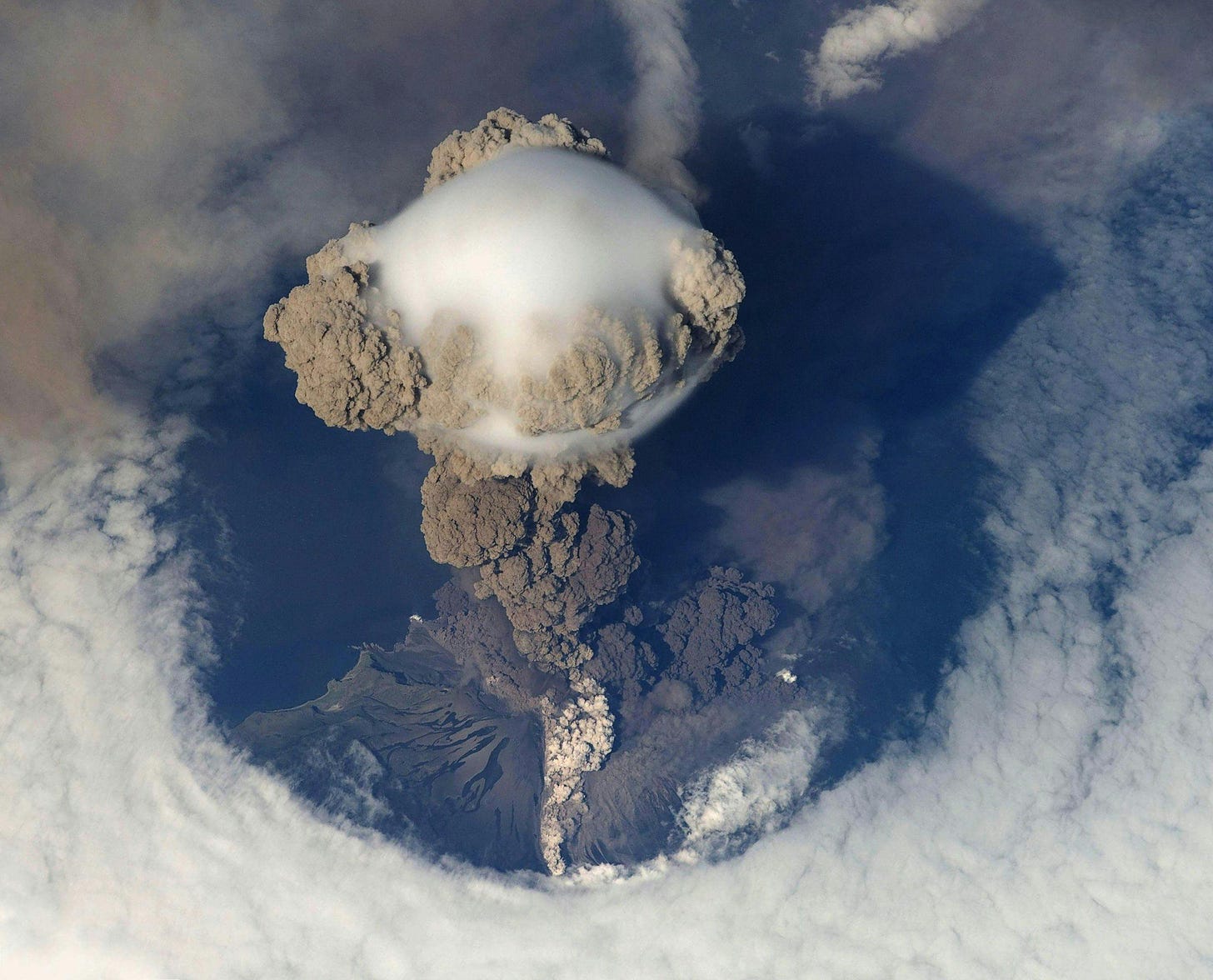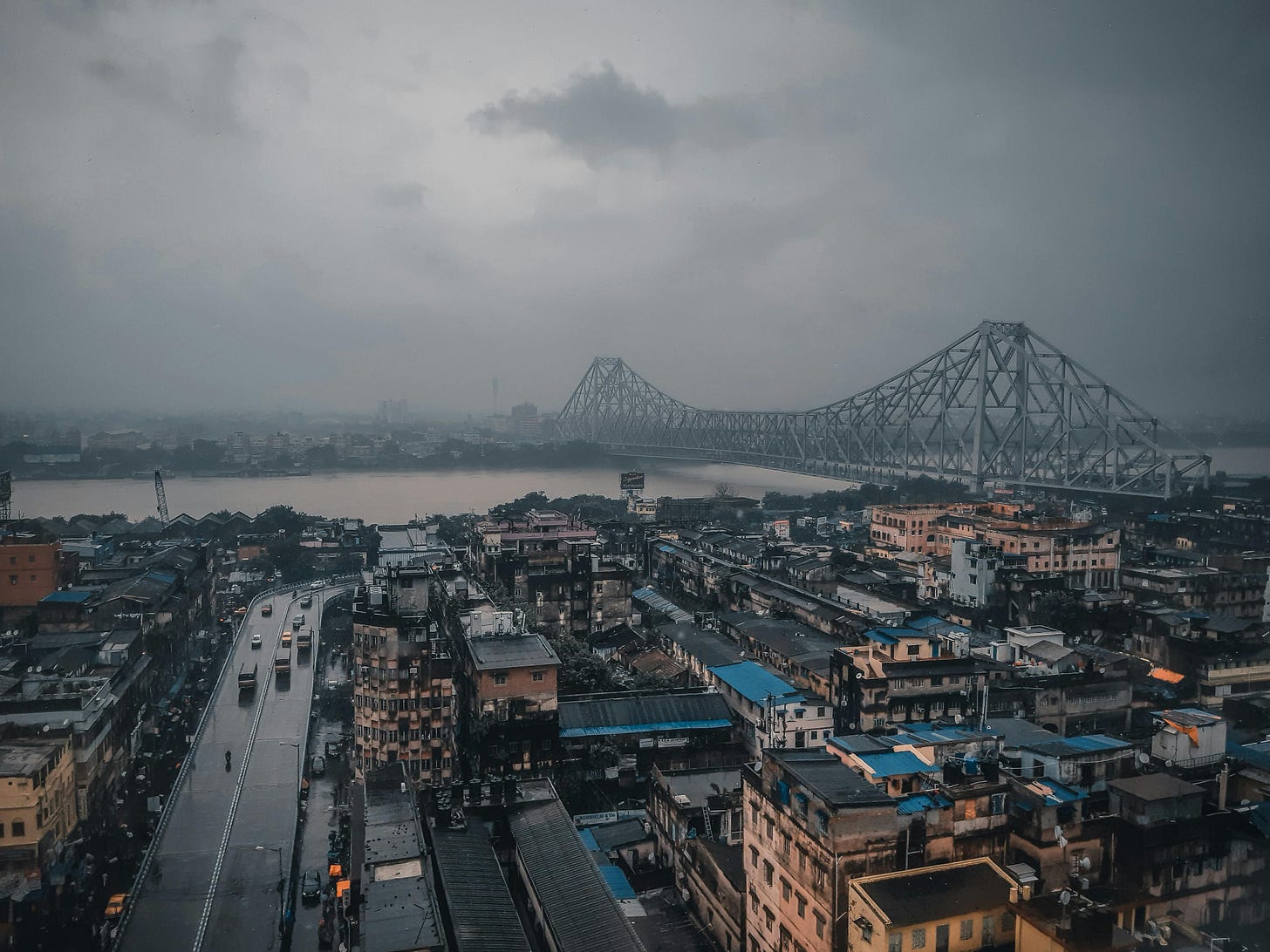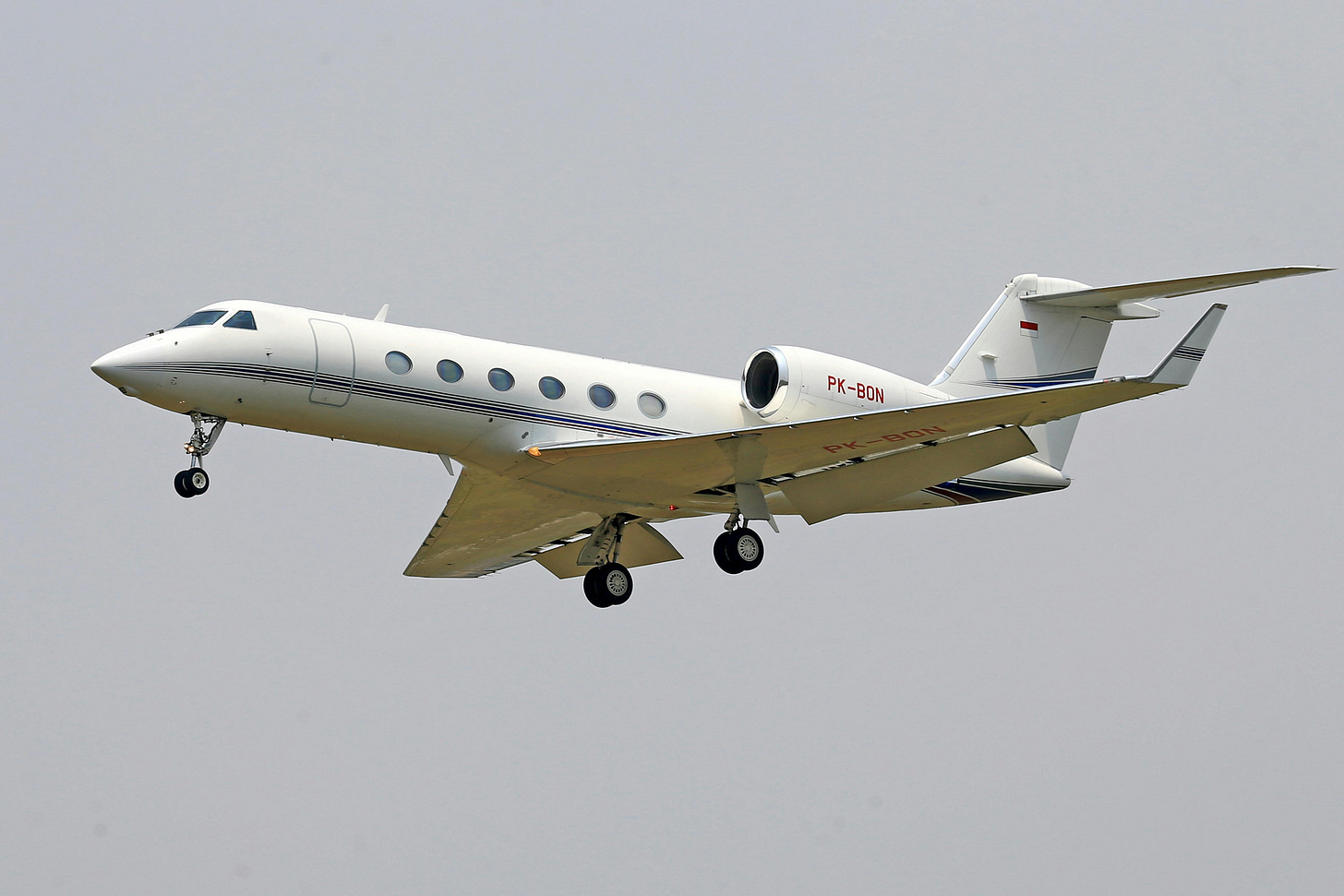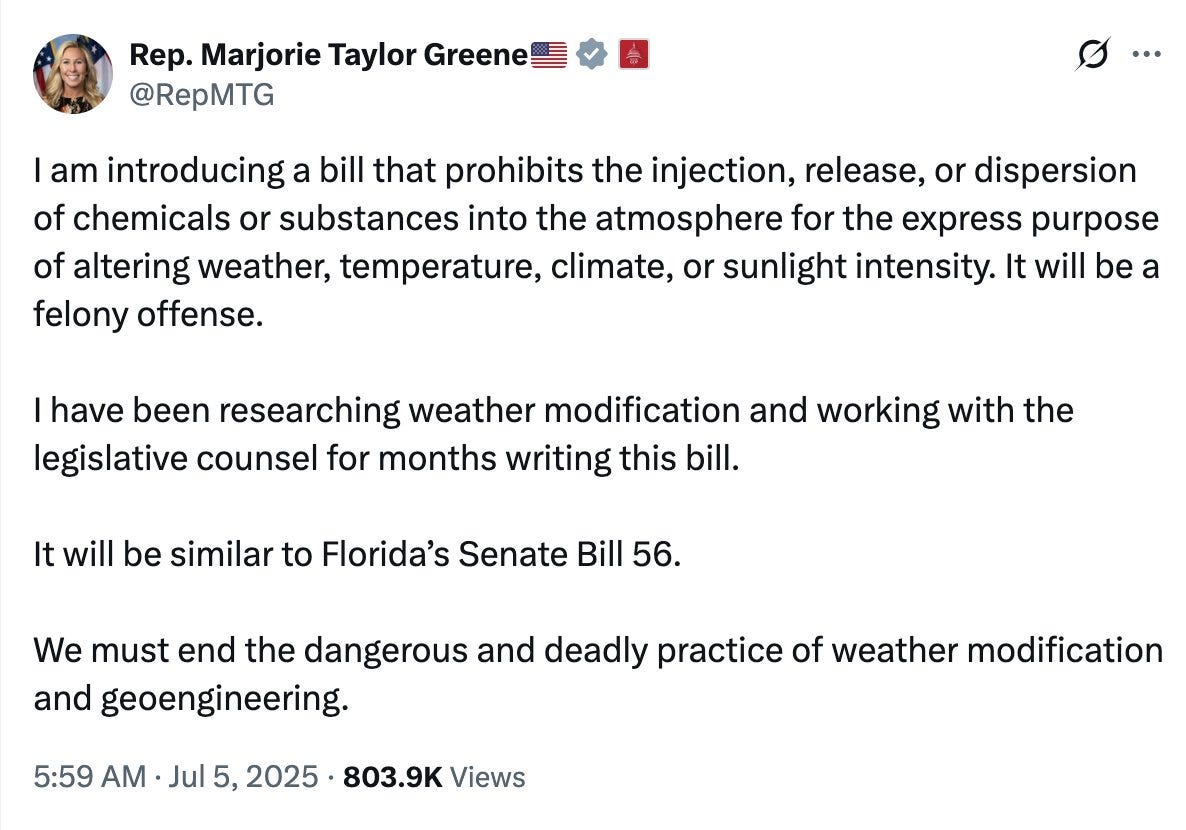The high-stakes gamble of solar radiation management
Part science, part taboo, solar geoengineering could turn passenger jets into planetary cooling machines. Is the industry - and the world - ready?
Geoengineering is moving from fiction to reality — and aviation may be the delivery system. Our new explainer breaks down the science, risks, and what it means for airlines.
The year 536 CE marked what historian Michael McCormick calls "the beginning of one of the worst periods to be alive, if not the worst year."
That year, the sun, according to Roman historian Procopius, "gave forth its light without brightness... and it seemed exceedingly like the sun in eclipse." Chinese sources described "yellow ash-like substance from the sky" and snow falling in August. The Irish annals recorded simply: "A failure of bread."
Volcanic eruptions had ejected sulphur dioxide into the stratosphere on a gigantic scale, causing crop failures across continents, famine throughout Europe and Asia, making populations more susceptible to a plague that killed millions.

However, there is another example from the much more recent past. When Mount Pinatubo in the Philippines erupted in 1991, it injected millions of tonnes of sulphur dioxide into the stratosphere, causing 0.5°C of global cooling for two years. Unlike the 536 AD disaster, this was a manageable, measurable dip that scientists could study.
Could we mimic what happened in 1991 and run a controlled programme that cools the planet? One Silicon Valley startup wants to do precisely that.
The reality hijack: From fiction to $10 cooling credits
In 2022, former Y Combinator hardware chief Luke Iseman was listening to the audiobook of Neal Stephenson's novel Termination Shock while installing solar panels on his RV. Stephenson’s novel depicts a billionaire launching a geoengineering program: spraying sulphur dioxide into the stratosphere to cool the planet.
Given the climate emergency, this seemed like an obvious solution to Iseman. Why was no one doing this?
Within months, he teamed up with former Y Combinator alumnus Andrew Song to launch Make Sunsets, a startup that began launching weather balloons filled with sulphur dioxide into the stratosphere over Baja California, Mexico.
Soon, they were selling "cooling credits" at $10 per tonne (since reduced to $5), a fraction of the cost of carbon removal.
The reaction was swift, with some critics likening them to "Bond villains”. Meanwhile, having originally launched their balloons in Mexico, the controversy in the country had them take their operations back over the border.

More recently, the Trump administration's Environmental Protection Agency (EPA) launched an investigation into the practice. Conspiracy theorists now lump solar geoengineering with ‘chemtrails’ (contrails) as some nefarious scheme to alter the weather in Conservative-voting states.
The aviation connection: Same planes, different mission
The technology Song and others are pursuing isn't just climate science, but aviation engineering.
Stratospheric Aerosol Injection (SAI), the leading approach to solar geoengineering, would rely heavily on aircraft to deploy millions of tons of sulphur dioxide into the stratosphere annually.
The aircraft that airlines operate daily could be modified with sulphur dioxide tanks and specialised nozzles for planetary climate control. This would essentially be high-altitude cargo missions, except the cargo would be Earth's thermostat.
Peter Irvine, a University of Chicago academic and co-founder of research and education body SRM360, is blunt about the feasibility: "We are effectively certain that it would work. The physics is understood. Sulphur dioxide particles are nearly the perfect size for reflecting solar radiation. You will cool the planet."
It’s worth noting that SAI isn’t the only option; other climate modification solutions are also on the table.
For instance, marine cloud brightening would spray seawater into ocean clouds to make them more reflective.
More ambitious proposals include space-based solar shields, a prospect being explored by startup Reflect Orbital. Meanwhile, research is being conducted into refreezing the Arctic using underwater bubbles or surface coatings to restore ice cover. But Irvine dismisses some of the more sci-fi solutions as impractical: "We're talking about millions of tonnes of material into space. Maybe in the 22nd century."
As a result, aircraft-based SAI remains the most viable near-term approach.
The economics are seductive for industries struggling with emissions. Make Sunsets' cooling credits at $5 per tonne compare favourably to carbon offsets and are vastly cheaper than direct air capture (DAC) credits at around $500 per tonne.
Song told us that the startup has attracted 900 customers, including high-profile figures like Oculus founder Palmer Luckey and "an owner of an NFL team.". These early adopters represent a small but influential group willing to bet on controversial climate technology.

The maverick vs the establishment
The collision between Silicon Valley urgency and academic caution defines the current geoengineering landscape. Organisations like SRM360 represent a measured approach, rigorous research, international cooperation, and informed discussion.
Make Sunsets, by contrast, embodies the "move fast and break things" ethos, with Song saying that inaction would mean, “we're living in a 4C, 5C world.”
Academia and some governments are now starting to respond. Global geoengineering research now exceeds $200 million annually, with the UK alone committing over £60 million to studies.
Make Sunsets' controversial actions may even have inadvertently accelerated serious research by demonstrating that barriers to atmospheric intervention are lower than previously imagined. After all, when two non-scientists can purchase equipment on Amazon and begin stratospheric modification, the academic argument for "more research first" loses urgency.
The conspiracy problem: Chemtrails meet climate science
Solar geoengineering has collided headlong with one of the internet's most persistent conspiracy theories - of contrails, or ‘chemtrails’. Since Elon Musk's takeover of Twitter, thousands of posts now claim commercial aircraft spray poison or control the weather through contrails.
US Health Secretary Robert F Kennedy Jr is a particularly high-profile advocate of this line of thought. According to the Guardian, during one TV discussion he said “I’m going to do everything in my power to stop it. Find out who’s doing it and holding them accountable.”
Solar geoengineering has now been folded into this grand weather modification narrative. An academic analysis of 814,924 tweets containing #geoengineering revealed extensive contamination by the chemtrails conspiracy theory.
One tweet from a right-wing podcaster, for example, blames Bill Gates for deliberately changing the weather, resulting in deadly storms, and calls for his arrest. This has so far received almost 10k likes. Over 34 states have discussed geoengineering bans and prominent figures like Marjorie Taylor Greene have called for federal prohibition.
All this has created a surreal policy environment where legitimate climate research must overcome suspicion created by outlandish theories.
The global divide: Desperation vs responsibility
In fact, public opinion on solar geoengineering reveals a global divide that mirrors broader patterns of climate vulnerability and responsibility.
Research published by SRM360 comparing public attitudes across 30 countries found that the Global South is more supportive of geoengineering than the Global North. In regions already experiencing severe climate impacts, the abstract risks of atmospheric intervention pale beside the immediate reality of deadly heat waves, droughts, and storms.
Irvine identifies several factors driving this divide. "The more exposed you are to climate risk, the more open you might be to interventions that could help," he explains. "Another one is the more you feel responsible for emissions, the more you think this might be a distraction from it."
In wealthy Western nations like the UK and Germany, people express moral concerns about geoengineering as a technological fix for a problem they helped create. "People might think, no, no, no, that's the wrong way to solve the problem that we created. We're responsible for doing it the right way," Irvine notes.
The Global South feels no such moral obligation. Having contributed minimally to historical emissions while bearing the brunt of climate impacts, populations in vulnerable regions may see geoengineering as a reasonable response to a crisis they didn't create.
Age also plays a role. "The global South is generally younger," Irvine observes, and younger populations tend to be more open to technological solutions. Economic optimism matters too, regions experiencing rapid development are more likely to embrace technological fixes.
The termination shock
Solar geoengineering and SAI are, of course, not without risks. One is what Neal Stephenson called "termination shock", the title of his novel. What happens when geoengineering suddenly stops due to political upheaval, technical failure, or international conflict?
Without the artificial cooling mask, accumulated greenhouse gases would assert their full warming potential. One scientist has compared this to suddenly opening a giant, global-sized oven door.
But there's a second risk: that SAI deployment itself could disrupt global weather patterns during operation, potentially causing monsoon failures and crop disasters. What happened in 536 CE is a particularly catastrophic example of this.
Song acknowledges both risks but argues the second is manageable through careful deployment: "The dose makes the poison." He believes controlled, gradual intervention bears little resemblance to volcanic eruptions that cause sudden, massive temperature drops.
Song also points out that we already face the first type of termination shock, thanks to the emission of 73 million tonnes of sulphur dioxide from fossil fuels. "If the world halted fossil-fuel burning overnight, we'd lose that cooling almost immediately," Song explains. "Model studies show global temperatures would jump toward 1.8-1.9°C above pre-industrial within a year."

In particular, Song pointed us to an Economist piece saying that warming in India would be much worse, were it not for the pollution.
Unlike accidental pollution, intentional solar radiation management could be "planned and tapered," ramping down in sync with decarbonisation efforts to avoid the cliff-edge rebound that stopping fossil fuels would create.
The moral hazard of cooling credits
Aviation faces an impossible trilemma: maintaining growth, achieving net-zero targets, and avoiding economic collapse. The industry accounts for roughly 3% of global emissions, but those emissions are rising and are notoriously difficult to eliminate.
Sustainable aviation fuels remain expensive and limited in supply. Electric and hydrogen aircraft face technological constraints that will take decades to overcome for long-haul flights. DAC costs around $500 per tonne. Against this backdrop, Make Sunsets' cooling credits at $10 per tonne represent a seductive economic alternative.
Critics worry this logic undermines the entire decarbonisation effort. If airlines can offset their emissions for $10 per tonne while other solutions cost much more, what incentive remains for genuine emissions reductions?
The aviation industry's net-zero commitments become meaningless if cheap atmospheric cooling provides an easy alternative to eliminating emissions.
Song rejects the moral hazard argument, "cooling credits buy time for hard-to-abate sectors to reach net-zero. They don't reduce anyone's obligation to decarbonise."
The aviation industry's unique role
But airlines wouldn't just be customers for cooling credits, they would likely operate the infrastructure needed for large-scale stratospheric aerosol injection.
According to research from SRM360, a fleet of modified commercial aircraft such as Boeing 777s could deploy the millions of tonnes of sulphur dioxide needed for planetary cooling. The technical requirements are well understood: planes would need sulphur dioxide tanks, specialised nozzles, and modified plumbing systems.

In fact, the technical barriers for a much smaller effort are surprisingly low. As SRM360's research demonstrates, even a "micro-scale" deployment could be achieved by buying a business jet and modifying it to carry sulphur dioxide for around $30 million, well within reach of wealthy individuals, corporations, or smaller nations.
And so, perhaps the real issue isn't choosing between managed geoengineering and unmanaged climate chaos, but the urgent need to build international frameworks for atmospheric intervention now, before desperation drives uncoordinated action.
The aviation industry, which could both deploy and benefit from these technologies, may find itself at the centre of humanity's most consequential decision: whether we're wise enough to develop governance systems for planetary climate control, or whether we'll let market forces and climate desperation decide our atmospheric future.
For aviation, this represents both an opportunity and a responsibility that the industry has barely begun to acknowledge, let alone address.



